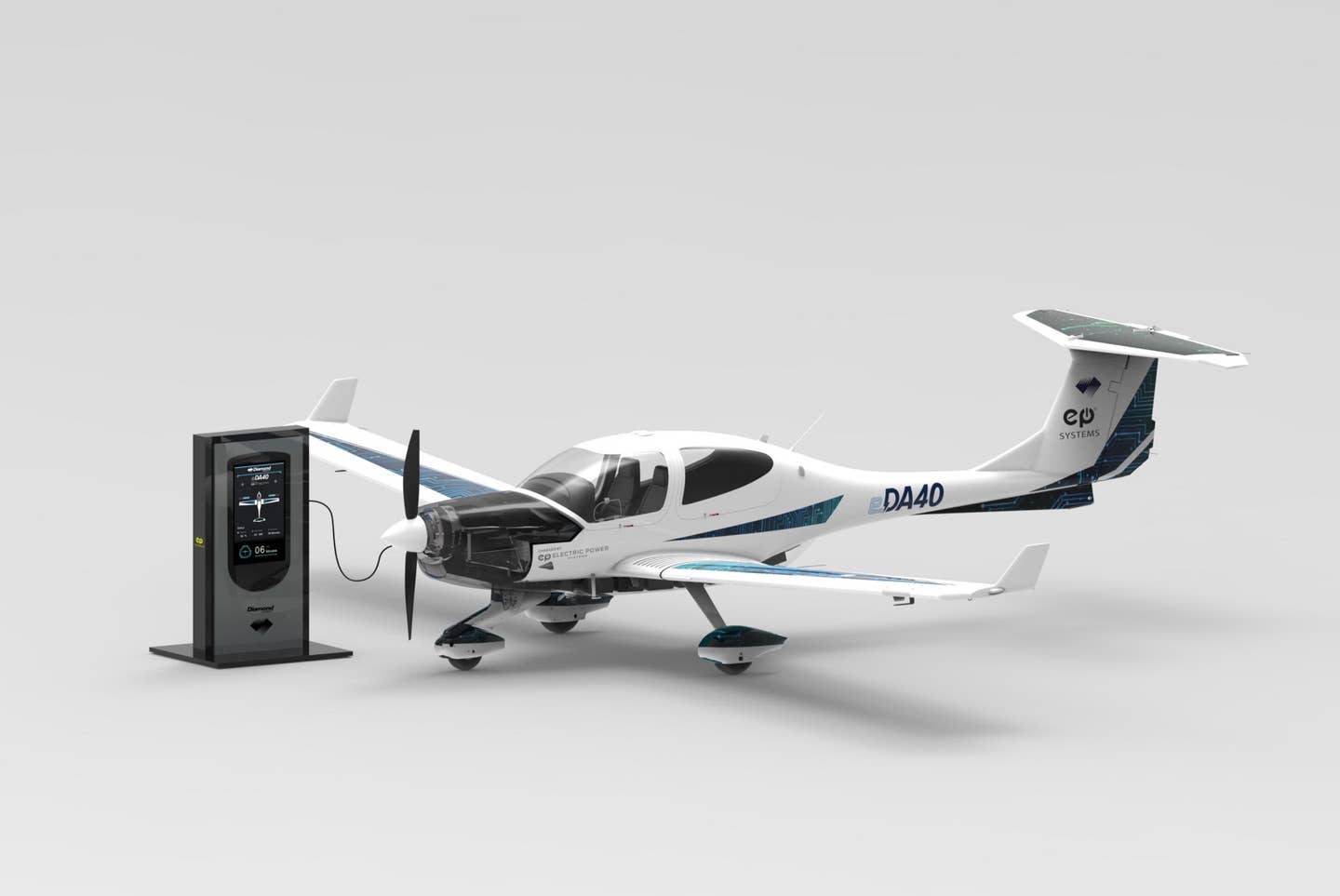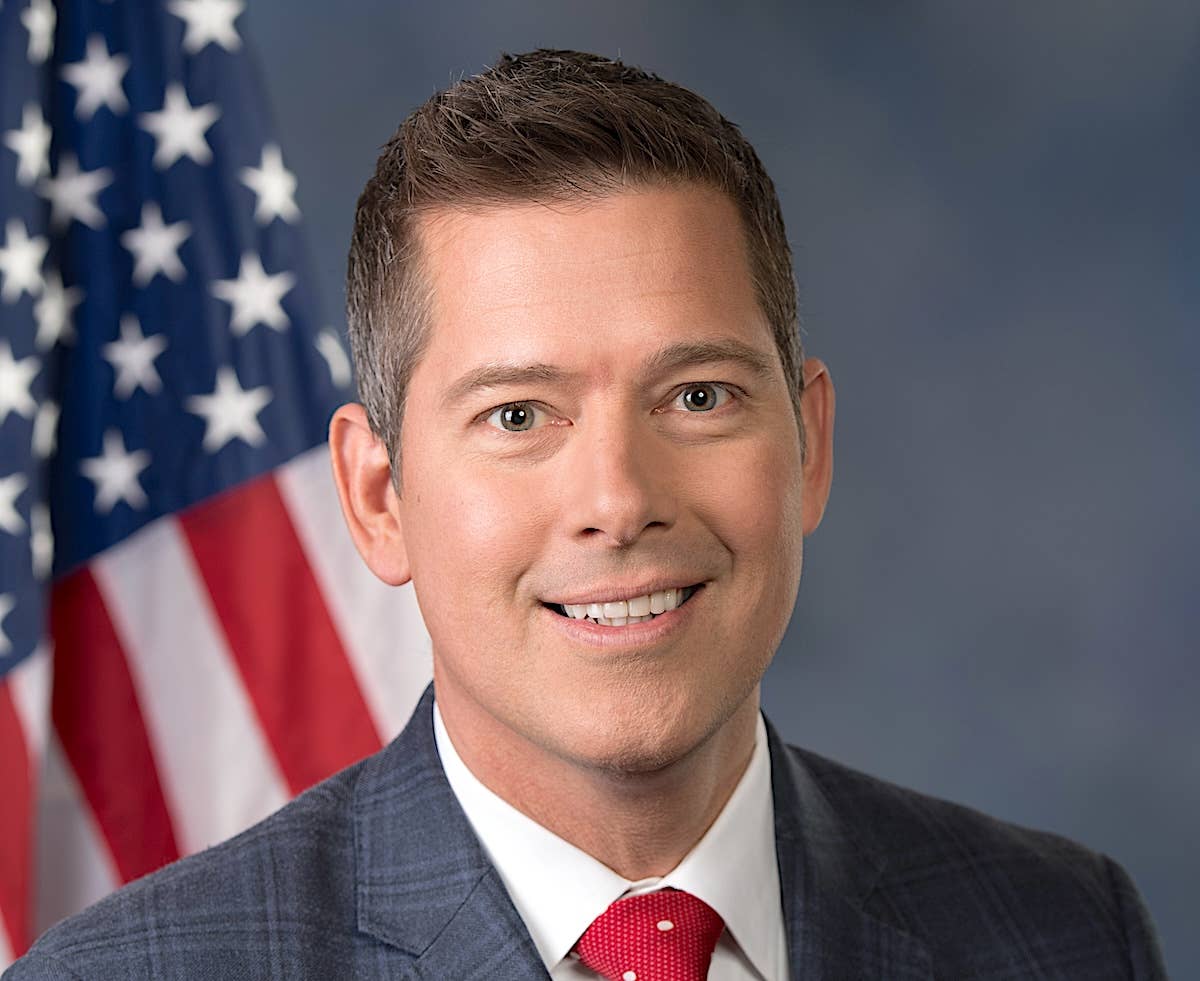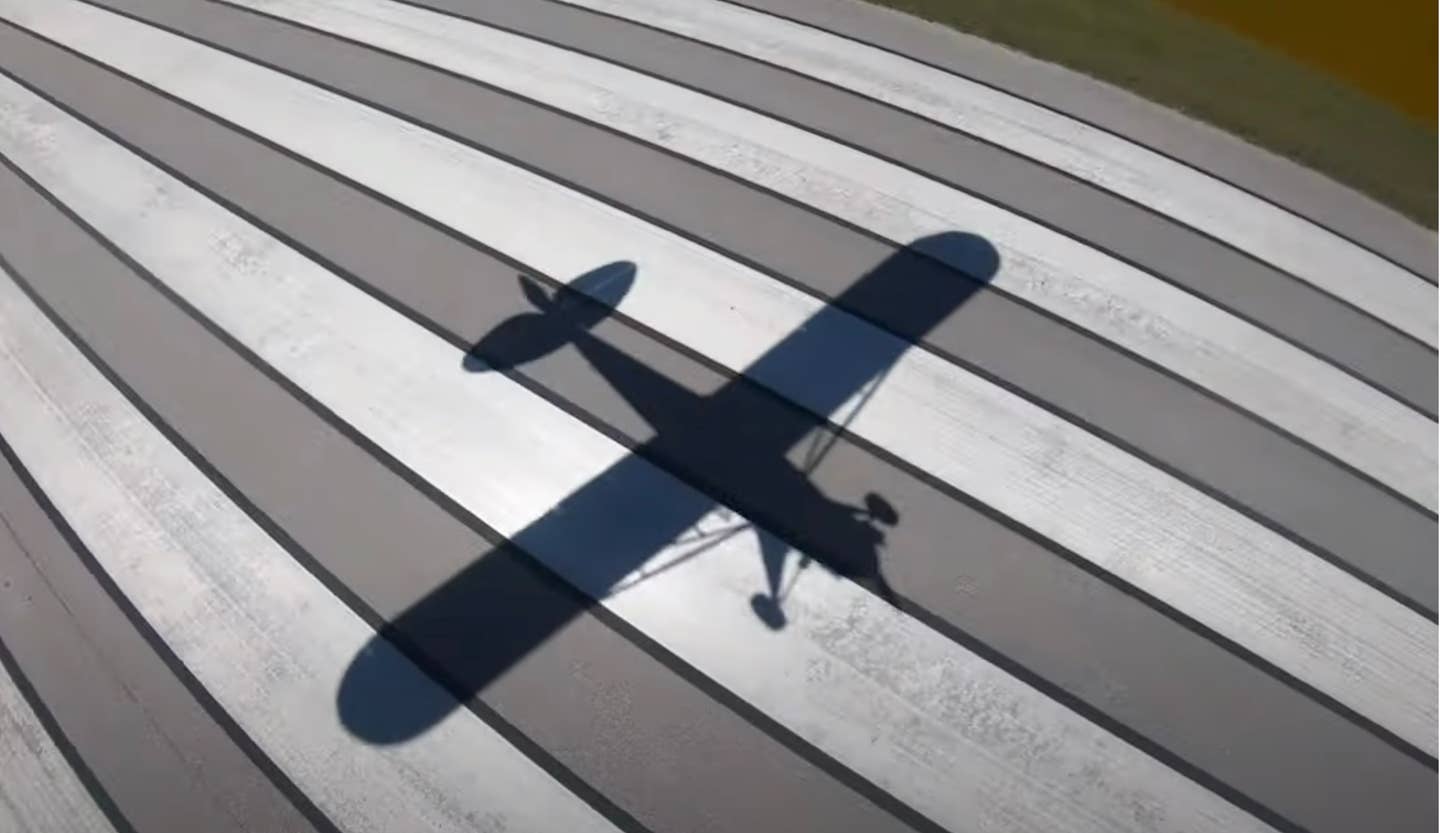Why Diamond’s Electric DA40 Could Be A Corner Turner
Electric aircraft come at us at the rate of one a week, but Diamond’s new eDA40 is something different: an established model with an electric motor. It shows how far batteries have come.

Rendering: Diamond Aircraft
When Diamond’s presser on its new-OK, planned-electric DA40 arrived yesterday, it almost went into the bit bucket as just another in an ever longer list of e-airplane announcements. But then ... wait, this is Diamond, not a garage startup looking for starry-eyed VC dollars. Nonetheless, I have learned to carefully word search press releases for the phrase game changer and/or either word separately. The announcement passed through my filter.
Having been knocked all but senseless by weekly announcements on new electric airplanes, I have nonetheless retained enough of my wits to sense that Diamond’s entry shows promise. I’m not going to call it a game changer, because I don’t think it is, but I would coin a new phrase: corner turner. There’s a favorable alignment of timing, rising demand, advancing battery technology and a cooperative regulatory environment that could very well buoy this project into viability.
When I first started covering electric airplanes more than a decade ago, no one knew what to expect. But industry leader Pipistrel eventually concluded that the best way to build an electric airplane was not to slap an e-motor into an airframe that had a gasoline engine, but to design the airframe clean sheet as an electric. Perversely, it then slapped an electric motor into the Rotax-powered Alpha trainer and enjoyed modest sales success, albeit not in the commercial flight training world. With its eFlyer 2, Bye Aerospace is hewing to the ground-up approach and Diamond is just electrifying a DA40.
There may be method to this madness. First of all, the DA40 is a proven airframe with benign, predictable handling that’s yielded a superb safety record. It hasn’t been every flight school’s cup of tea, but it has still found sales traction. Now, something intriguing: Diamond isn’t certifying a new type here, but doing an STC for a new powerplant. Diamond’s Scott McFadzean told me they hope to be able to retrofit existing airframes with electric propulsion. Think about that. Your gasoline- or diesel-powered DA40 is timed out and three years or five or eight years from now, the electric economics look better, so you convert it. If they can make this work, it would reduce the capital requirement by leveraging sunk costs in an existing airframe.
Some numbers: Diamond says the eDA40’s endurance will be about 90 minutes, with a return-to-service charge time of about 20 minutes. One charging proposal is a truck with a battery pack that could drive right up to the airplane just as a fuel truck does now and to shave costs, the truck could be charged at night to capitalize on off-peak pricing. (I’m sure it will have an onboard computer to figure all that out and send a text reminder to the driver’s Apple watch.)
The batteries will be in a pod under the belly of the airplane and although I don’t have the weight of them precisely, the airplane will retain its 2821-pound gross weight (1280 kg) on a planned empty weight of 2403 pounds (1090 kg). Payload will be about 190 kg or 418 pounds. It’s a two-person airplane, even though the cabin retains its original volume and seats.
Diamond estimates the battery life will be about 2000 cycles, which translates to a best-case of 3000 hours. Real-world performance here matters because battery replacement is expensive and shorter cycle life could chew into the 40 percent lower operating costs Diamond thinks the eDA40 could deliver. And although 40 percent sounds like a lot, it's not necessarily if a school doesn't budget that for fuel. No hard numbers on price yet, but McFadzean said a working estimate of $550,000 is realistic. That’s similar to the Jet-A DA40NG.
Heretofore, electric airplanes have been curiosities and somewhat illusory. I’ve had to travel all the way to Slovenia (twice) to fly one and European owners have made themselves scarce when asked about operating economics. But I think a sea change is afoot caused by a combination of worry about unleaded avgas costing more, looming climate change regulation and a sense of inevitability of electric propulsion, given the directionality of the car and truck market. After a period of doldrums, the electric vehicle market is again booming.
While the timing is more favorable for an entry, I have no feel or prediction for the developmental timeline. I don’t see these airplanes being disruptive. Yet. They may eventually get there, but Diamond will have to prove the benefits of electrics over its efficient gasoline and diesel aircraft. Flight schools pinch pennies and while some are sure to be early adopters of an airplane or two, it’s fleet sales from the likes of the University of North Dakotas, the Embry-Riddles and other schools that drive volume and, to a degree, the cachet that leads to additional sales.
And speaking of UND, I asked the school’s chief instructor, Jeremy Roesler, what the potential might be. He thought 90 minutes of endurance was a little tight for UND’s needs, but perhaps workable. Like everyone else, he expects electrics to outstrip the infrastructure required to support them and that’s likely to yield some turbulence in the acceptance. He sees geography as potential destiny. How will those batteries perform in a North Dakota winter and what will cabin heat do to endurance? He also said something surprising: “I think we would be more likely to have a Jet-A fleet before an electric fleet.” He said the school has been impressed with the longer overhaul times and low operating costs of diesel and is viewing them more favorably.
Diamond owns the aerodiesel market so this may bode well for the company because it’s likely that electrics, when they are accepted, will go into mixed fleets. Operators will continue to need airplanes with longer legs than electric aircraft will be capable of for perhaps the next decade. By 2023, say, Diamond may very well be the only company that can offer the same model with three propulsion systems: gasoline, Jet-A and electric. That’s quite a portfolio.
Although Roesler says UND may not be ready to buy electric airplanes at the moment, he says he’s bullish on Diamond’s chances. And he does consider the eDA40 a game changer. “If there’s a company to get electric airplanes into the industry, Diamond is the one. I have great confidence in Diamond doing this,” he says. That bodes well, too, because while I just flap my lips, Roesler actually signs the checks for new airplanes.






